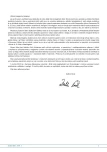-
Medical journals
- Career
NOCTURIA IN ELDERLY PATIENTS AND ITS CONSEQUENCES; WHICH OPTIONS DO WE HAVE TO INFLUENCE NOCTURIA? WHAT IS POSSIBLE, WHAT IS FEASIBLE AND WHAT IS REASONABLE?
Authors: K. Karmašová
Authors‘ workplace: Urologická klinika FN Brno LF MU Brno
Published in: Urol List 2012; 10(1): 63-66
Overview
Nocturia is one of the most frequent reasons why patients seek help of an urologist. Nocturia is manifested by the need to wake up once or several times during the night with the urgency to void, which has to be satisfied. Each nocturia episode has to be preceded and followed by a period of sleep. We cannot speak about nocturia when the patient is woken up by other stimulus (anxiety, pain, external stimuli) and decides to use the bathroom only because he/she is awake. For long nocturia has been considered as one of the lower urinary tract symptoms. Since 2002 it is identified as a separate clinical entity. Nocturia has a significant effect on the quality of life [1]. Nocturia is a symptom of a wide range of conditions belonging to the scope of internists, neurologists, geriatrists, specialists in sleep disorders and therefore represents an inter-disciplinary symptom. The general practitioner often plays a key role in the management of this condition by deciding on which cause of nycturia is the most significant one.
Key words:
nocturia, elderly patient, polyuria, desmopressin
Sources
1. Kerrenbroeck P, Abrams P, Chalkin D et al. The standardisation of terminology in nycturia: report from the Standardisation Sub-commitee of the International Continence Society. Neurourol Urodyn 2002; 21(2): 179–183.
2. Kerrenbroeck P. Nykturia and Tamsulosin OCAS European Urology Complements. 6(12): 723–727.
3. Yoshimura K, Terada N, Matsui Y et al. Preva-lence of and risk factors of nocturia: Analysis of a health screening program. Int J Urol 2004; 11(5): 282–287.
4. Coyne KS, Zhou Z, Bhattacharyya SK et al. The prevalence of nocturia and its effect on health-related quality of life and sleep in a community sample in the USA. BJU Int 2003; 92(9): 948–954.
5. Schatzl G, Temml C, Schmidbauer J et al. Cross-sectional study of nocturia in both sexes: analysis of a voluntary health screening project Urology 2000; 56(1): 71–75.
6. Asplund R, Aberg H. Diurnal variation in the levels of antidiuretik hormon in the erderly. J Intern Med 1991; 229(2): 131–134.
7. http://www.fit-kul.cz/spankovy-cyklus.
8. Asplund R, Aberg H. Nocturnal micturition, sleep and well-being in women of ages 40–64 years. Maturitas 1996; 24(1–2): 73–81.
9. Stewart RB, Moore MT, May FE et al. Nocturia: a risk factors for falls in the erderly. J AM Geriatr Soc 1992; 40(12): 1217–1220.
10. Kujubu DA, Sherif RA. Evaluation of nocturia in erderly. The Premanete Journal Winter 2007; 11(1): 37–39.
11. Fitzquerald MP, Litman HJ, Link C et al. The association of nocturia with cardic dinase, diabetes, body mass index, age nad diuretik use. Results of from the BACH surfy. J Urol 2007; 177(4): 1385–1389.
12. Lose G, Lalos O, Freeman GM et al. Efficacy of desmopressin in treatment of nocturia in double blend placebo - controlled study in women. Am J Obstet Gynecol 2003; 189(4): 1103–1116.
Labels
Paediatric urologist Urology
Article was published inUrological Journal

2012 Issue 1-
All articles in this issue
- NOCTURIA IN ELDERLY PATIENTS AND ITS CONSEQUENCES; WHICH OPTIONS DO WE HAVE TO INFLUENCE NOCTURIA? WHAT IS POSSIBLE, WHAT IS FEASIBLE AND WHAT IS REASONABLE?
- CENTRAL NERVOUS SYSTEM ADVERSE DRUG EVENTS OF ANTIMUSCARINIC MEDICATION
- REPORTING AND GRADING OF COMPLICATIONS AFTER UROLOGIC SURGICAL PROCEDURES: AN AD HOC EAU GUIDELINES PANEL ASSESSMENT AND RECOMMENDATIONS
- RELATIONSHIPS OF TESTOSTERONE AND PROSTATE CANCER
- CANCERS OF PROSTATE AND TESTIS IN THE CZECH AND WORLDWIDE POPULATION
- ACTIVE SURVEILLANCE OF THE SMALL RENAL MASS
- RADIOFREQUENCY ABLATION OF RENAL TUMOURS
- CURRENT PRINCIPLES AND THERAPEUTIC CONCEPTS OF RETROGRADE INTRA-RENAL SURGERY FOR UROLITHIASIS
- ROLE OF ANTIBIOTIC PROPHYLAXIS IN THE MANAGEMENT OF VESICOURETERAL REFLUX
-
Laparoskopická operace pánevního dna
Část I – laparoskopická kolposuspenze
Část II – laparoskopická kolpopexe - MULTIPLE SCLEROSIS AND LOWER URINARY TRACT DYSFUNCTION. METHODS OF DIAGNOSTICS; TREATMENT AND FOLLOW-UP REQUIREMENTS
- Urological Journal
- Journal archive
- Current issue
- Online only
- About the journal
Most read in this issue- RELATIONSHIPS OF TESTOSTERONE AND PROSTATE CANCER
- CENTRAL NERVOUS SYSTEM ADVERSE DRUG EVENTS OF ANTIMUSCARINIC MEDICATION
-
Laparoskopická operace pánevního dna
Část I – laparoskopická kolposuspenze
Část II – laparoskopická kolpopexe - RADIOFREQUENCY ABLATION OF RENAL TUMOURS
Login#ADS_BOTTOM_SCRIPTS#Forgotten passwordEnter the email address that you registered with. We will send you instructions on how to set a new password.
- Career

